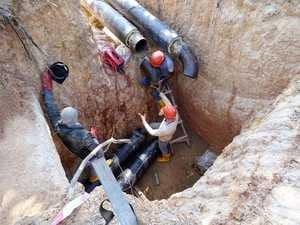
Safety authorities say trenches pose some of the most significant hazards on construction sites nationwide, including Georgia. That is why they have a National Trench Safety Stand Down in June of every year. With a myriad of construction projects scheduled for the summer months, more workers will need reminding that a collapsing trench wall could cause death in the blink of an eye.
Can you imagine bearing the weight of a small pickup truck or a car? That is the weight of the soil that could bury you if you are in a trench when a wall caves in. You might not realize it, but it can suffocate you within minutes, and there is little chance of survival.
Your employer’s responsibility
Be careful not lose sight of the fact that even shallow trenches are hazardous. If you gain knowledge of the dangers they pose along with the safety standards of the Occupational Safety and Health Administration, you will know what should be expected from your employer. He or she is responsible for your safety, and you have the right to refuse to enter unprotected excavations.
Is there a designated, competent person on site?
OSHA regulations mandate that every construction site with excavations must have an appointed competent person who is adequately trained and responsible for identifying potential, predictable and existing hazards in working conditions and surroundings. He or she must have the authority to take the necessary steps to eliminate or correct potential dangers.
Soil analysis and protective systems
The competent person’s most significant responsibility is to analyze the soil and determine which type of protective system to use. The classification of the soil type will determine the method of protection to apply to the trench — with solid rock being the only type that needs no protection. Based on the classification of the soil, the following protection options exist:
- Sloping: This involves cutting the walls of the trench back at predetermined angles away from the excavation.
- Benching: Along with sloping, benching includes shaping the incline in a series of horizontal levels or steps.
- Shoring: Shoring requires the installing timber or aluminum hydraulic supports to prevent soil movement.
- Shielding: This involves placing of steel or aluminum trench boxes in the excavation to withstand any cave-in force.
Additional potential dangers and safety measures
The following potential hazards and safety precautions should always be addressed before and during working hours by the competent person, but looking out for them yourself might prove invaluable to your well-being and safety:
- Fall protection: Guardrails and barricades must be in place to prevent you or any equipment you carry from falling into the trench when you walk around it or have to cross it.
- Adjacent structures and surface objects: You will typically need to remove or support nearby buildings, sidewalks, streets, fire hydrants, trees, telephone poles and other objects close to the excavation.
- Vehicular and mobile equipment: Barricades, signals, signs, flagmen or other warning systems must be in place, and you should always wear reflective clothing.
- Falling objects: No suspended loads must be overhead, and at least two feet of clearance around the trench edges is crucial.
- Underground utilities and water accumulation: Identification and marking of gas, electric, telephone, water and sewer lines are vital to prevent accidental strikes, and accumulated water can compromise soil stability.
- Hazardous atmospheres: Atmospheric testing is critical to protect you from too much or too little oxygen or toxic gases that might be present.
- Access and egress: A ladder or another means of entry and exit should be in place no more than 25 feet away from any worker in any trench that is deeper than four feet.
With all these safety measures in place, you will significantly reduce, if not eliminate, the risk of being buried in a trench. However, if you suffer any trench-related injuries, you might find comfort in knowing that the Georgia workers’ compensation insurance system will have your back. You can even utilize the skills of an experienced attorney to assist with the benefits claims process. The compensation typically covers medical expenses and lost wages.



